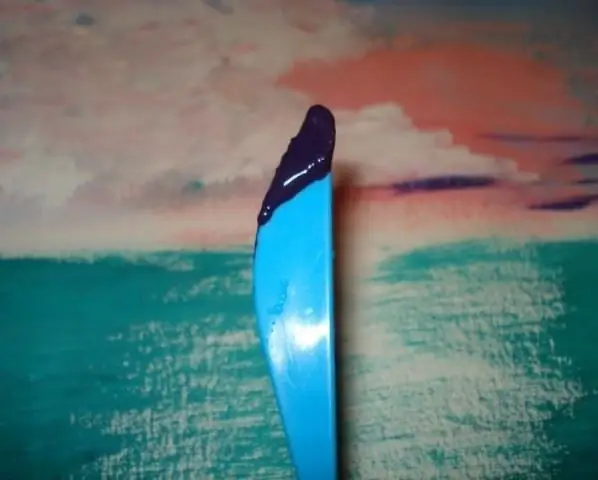A palette knife is a tool that allows you to work with oil paints in a new technique. Unlike a brush, a palette knife applies large strokes of paint to the canvas, making the picture more voluminous and expressive.

Instructions
Step 1
In the arsenal of artists there are two similar tools: a spatula and a palette knife. If the oil is mixed first on the palette, then the second is applied or, conversely, the paint is scraped off the canvas. They can be distinguished by the curved handle, which allows the artist to draw with a palette knife without touching the canvas with his hand. The spatula is usually flat.
Step 2
Prime the canvas and dry it. If necessary, draw a sketch of the future work with a slate pencil.
Step 3
Paint the main areas of the oil painting with a brush. If you're painting a still life, try painting over the background with a palette knife using the flat side.
Step 4
Mix a large amount of oil paint on the palette so that it can be applied in voluminous strokes that stand out against the texture of the canvas. If you're styling for the Impressionist style, use a pure bright color.
Step 5
Take enough paint with the tip of your palette knife. Apply paint to the canvas and smudge it over the surface, creating a background for a still life. Use a palette knife like a spatula when filling walls. This way, the background is completed much faster than if you were working with a brush. However, in this technique, the palette knife will not allow you to create overflows of color: the background will be monochromatic and one-textured. To diversify it, mix shades of the main background color. To show folds on the drapery or play of color and shadow, use the main color, add light and dark shades to it, diversify it with other rich colors.
Step 6
Move away from the picture and look at it from afar. This will allow you to understand where, in terms of composition, you need to apply additional colors and volume of drapery. Draw folds on the fabric with a palette knife with the sides. Apply a blob of paint to the canvas with the tip or edge of a palette knife and slightly flatten it with the flat side of the tool. Create the effect of bending the fabric not only with color, but also with protrusions when applying paint.
Step 7
Use a palette knife to create voluminous accents on the objects of the still life. Apply paint with the tip of the tool, placing the flat side against the canvas. At the same time, the edges of the blade will leave angular textured traces, which makes the object refined and expressive, slightly sharp.
Step 8
To show volume, for example, on the thorns of a rose, apply paint with the tip of a palette knife, lifting the blade up. The paint will seem to reach after your hand, leaving voluminous elongated marks.
Step 9
Play with the texture of the rest of the items. Apply paint quickly, moving your hand vigorously. See how the palette knife listens to your movements, what bizarre shapes paint leaves on the canvas. If you have applied excess volume somewhere, scrape off the paint with the edge of a palette knife.






